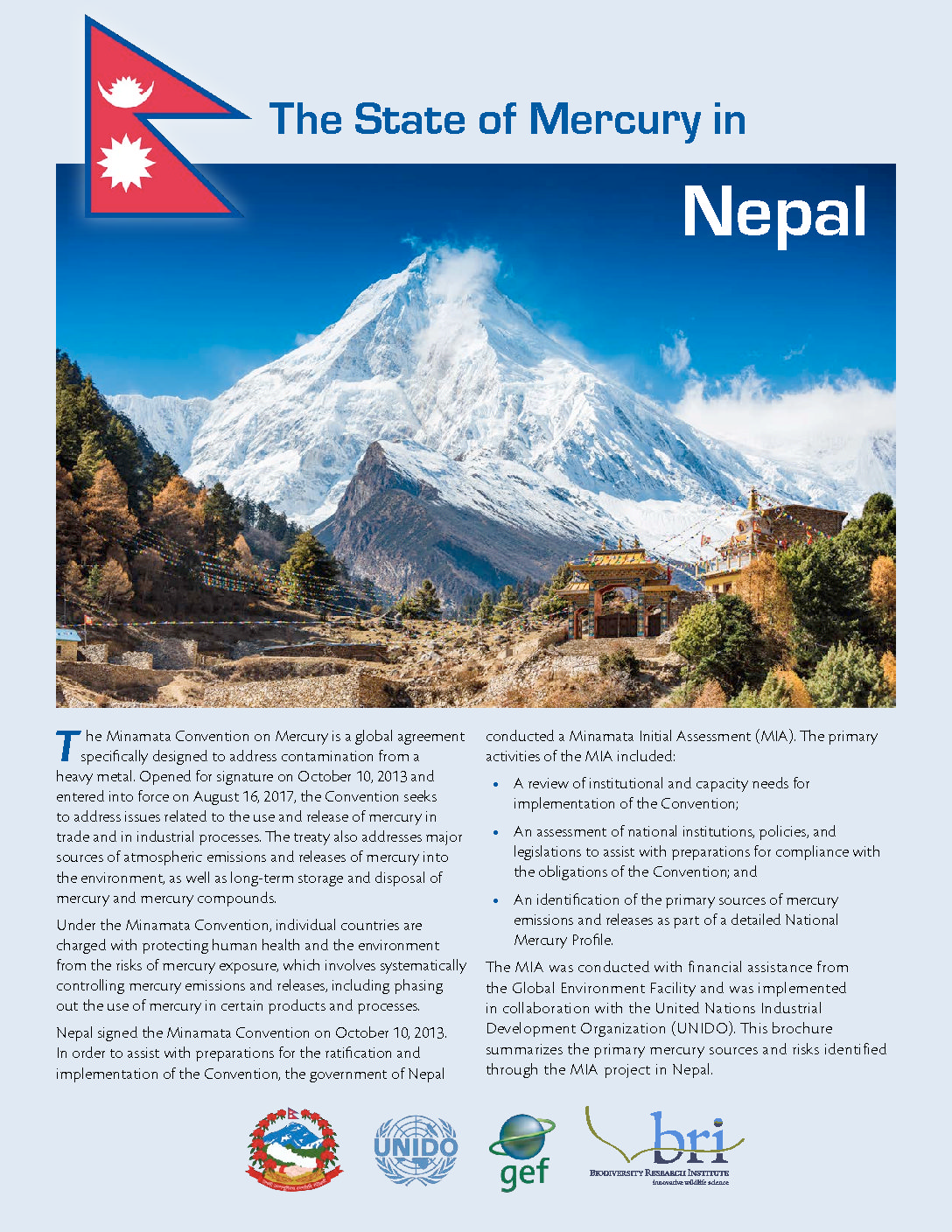Minamata Initial Assessments in Nepal
The Federal Democratic Republic of Nepal signed the Minamata Convention on October 10, 2013. Through our Center for Mercury Studies, BRI (an Executing Agency with UNIDO) worked with the Ministry of Science Technology and Environment to conduct a Minamata Initial Assessment. These activities will complement Nepal’s efforts to significantly reduce the exposure of mercury to humans and the environment.
Formal Capacity: International Technical Expert
Project Lead: David Evers
Funding/Implementing Agency: GEF/UNIDO
The State of Mercury in Nepal

Under the Minamata Convention, individual countries are charged with protecting human health and the environment from the risks of mercury exposure by systematically controlling mercury emissions and releases, including phasing out the use of mercury in certain products and processes.
In order to assist with preparations for the ratification and implementation of the Convention, the Government of Nepal conducted a Minamata Initial Assessment (MIA).
Country Profile

- Population: 28.51 million (World Bank 2015)
- Surface Area: 147,181 sq km
- Capital City: Kathmandu
- Official Language: Nepali
- UN Membership Date: September 16, 1975
- Minamata Signature Date: October 10, 2013
Nepal is a landlocked country in South Asia, bordered by China to the north and India to the south. Nepal is located in the Himalayas and is home to Mount Everest, the highest point on Earth. Tourism, handicrafts, and tea and coffee production are important mainstays in Nepal’s economy.
Meetings and Workshops

Over the last two years, Nepal has hosted a Minamata Initial Assessment Inception Meeting, Mercury Inventory Training Workshop, and Validation Workshop. The Validation workshop (pictured above) was held in January 2019, and marked the completion of Nepal’s Minamata Initial Assessment. Nepal’s MIA findings have since been reported in The Kathmandu Post, among other Nepalese media outlets.


